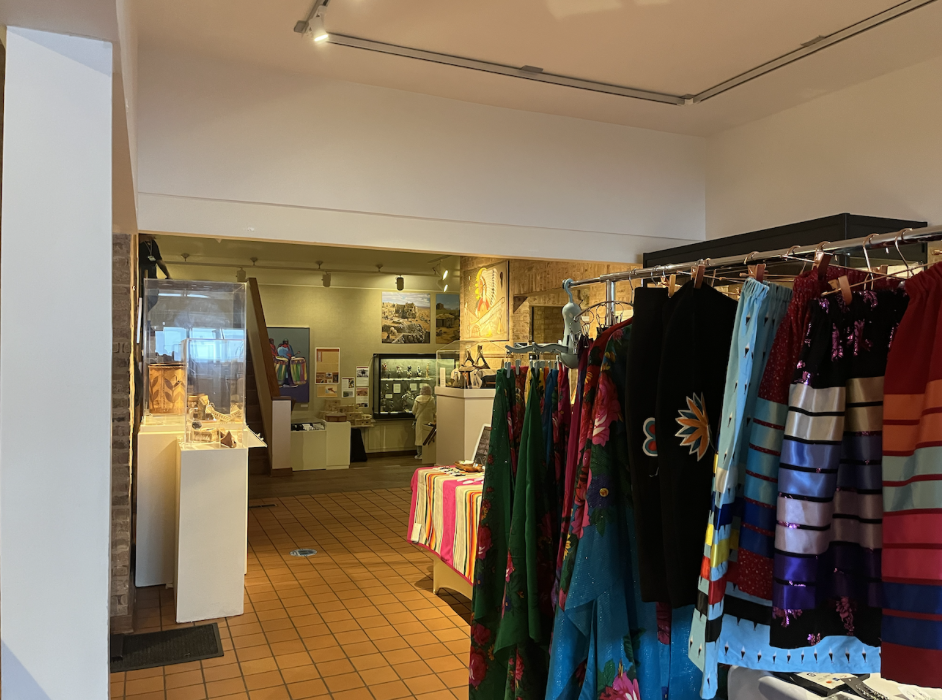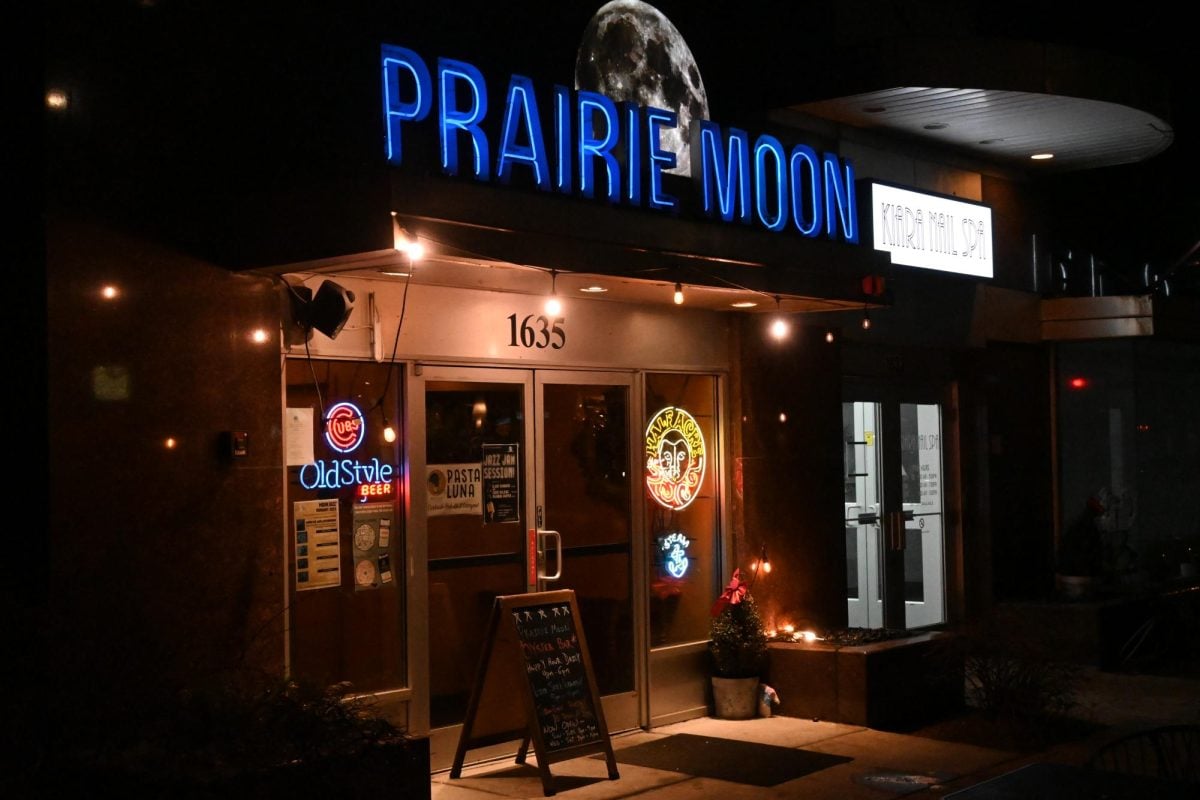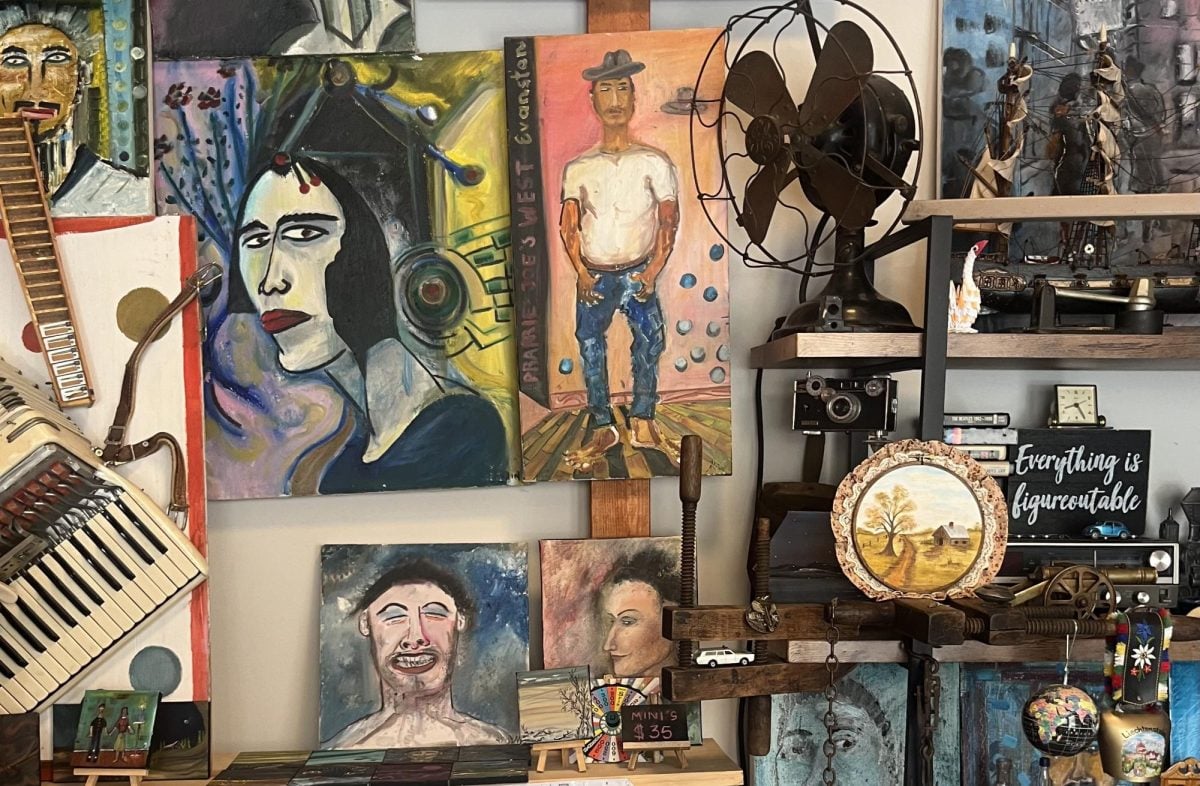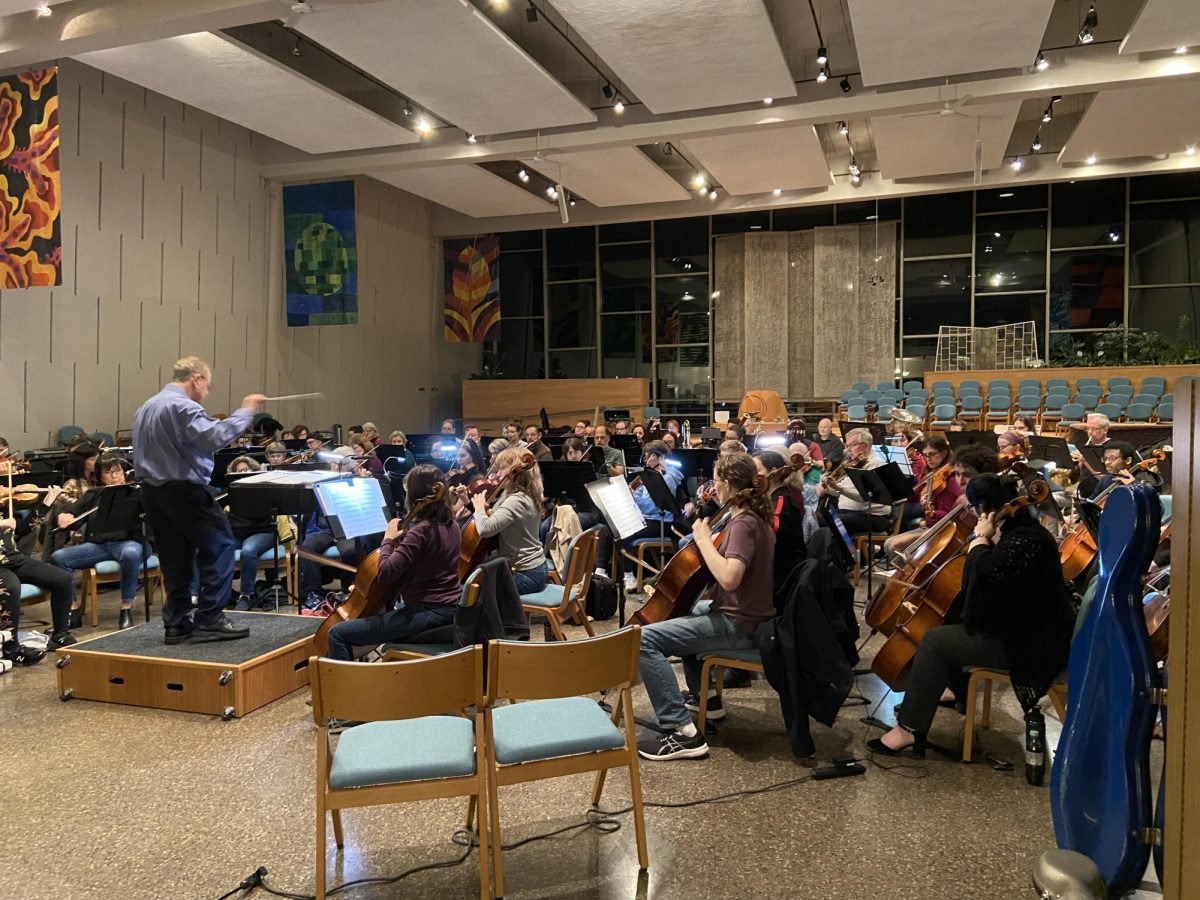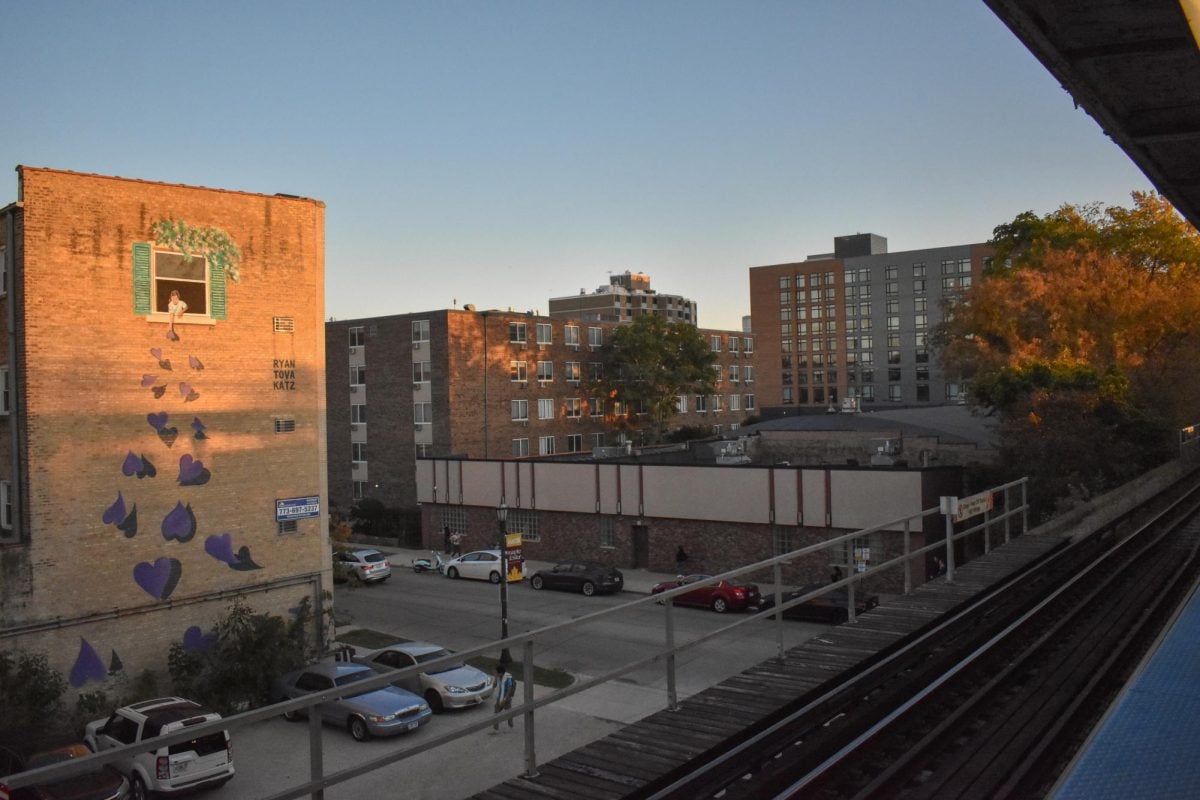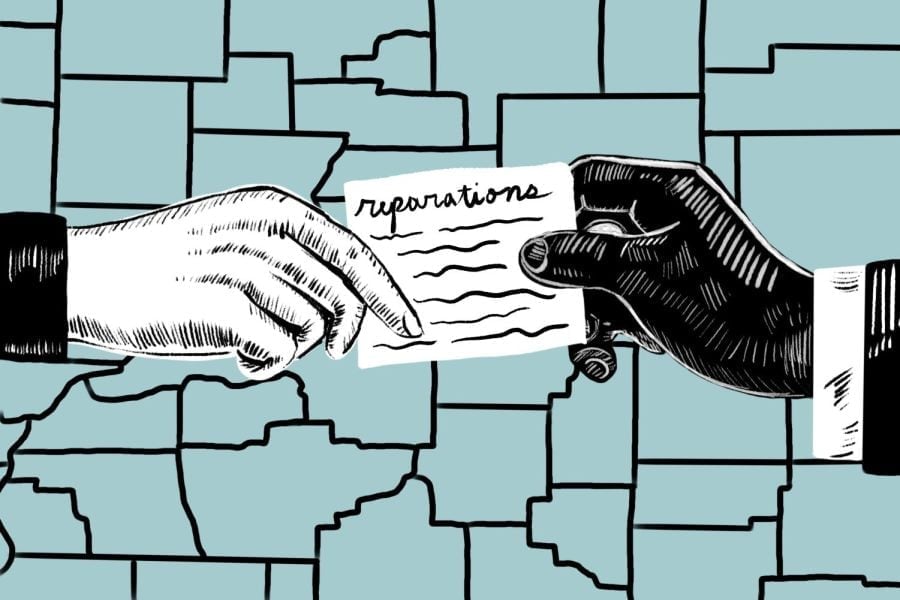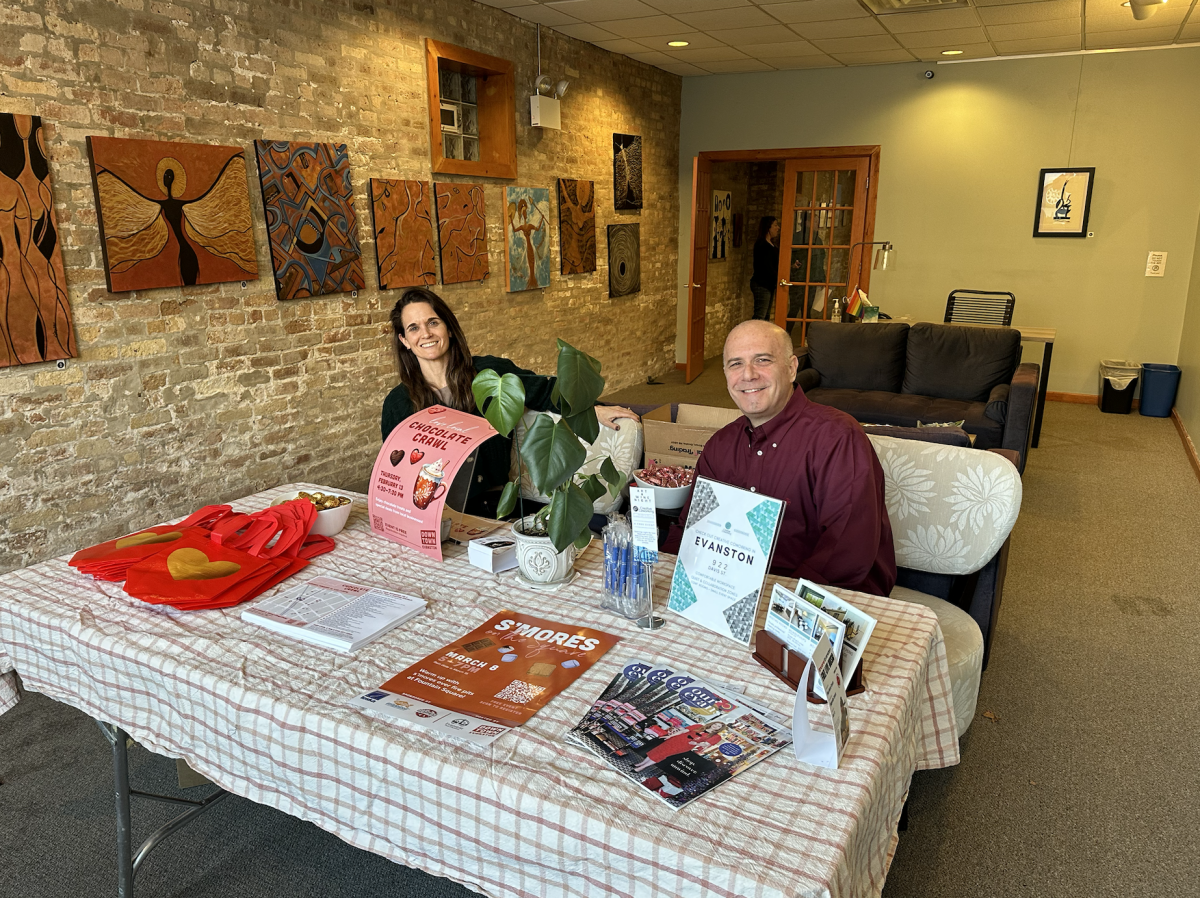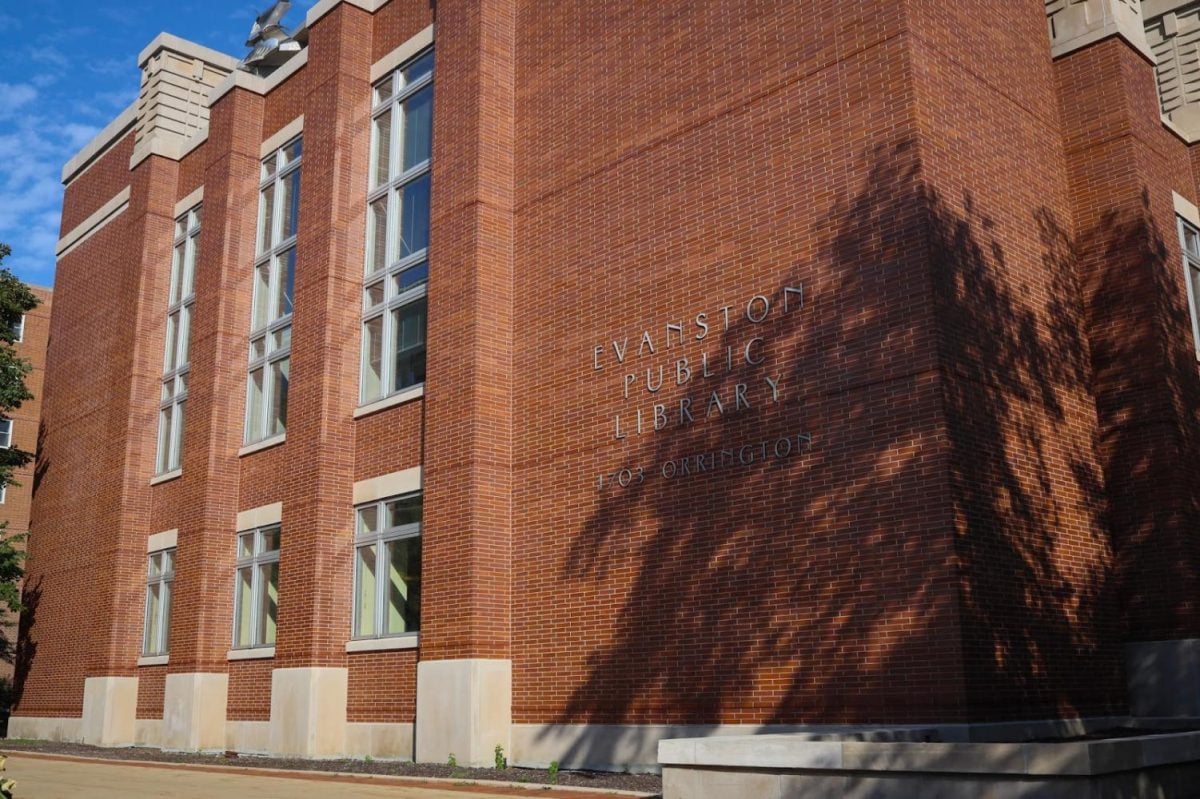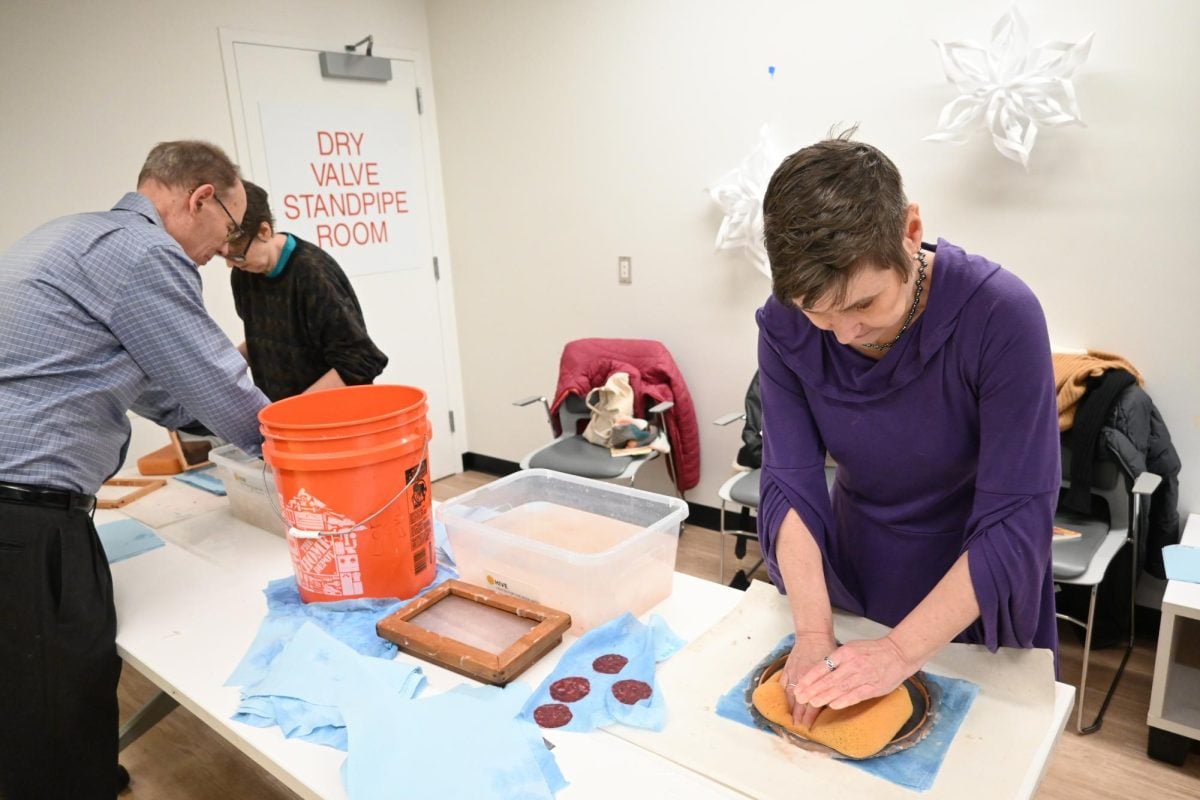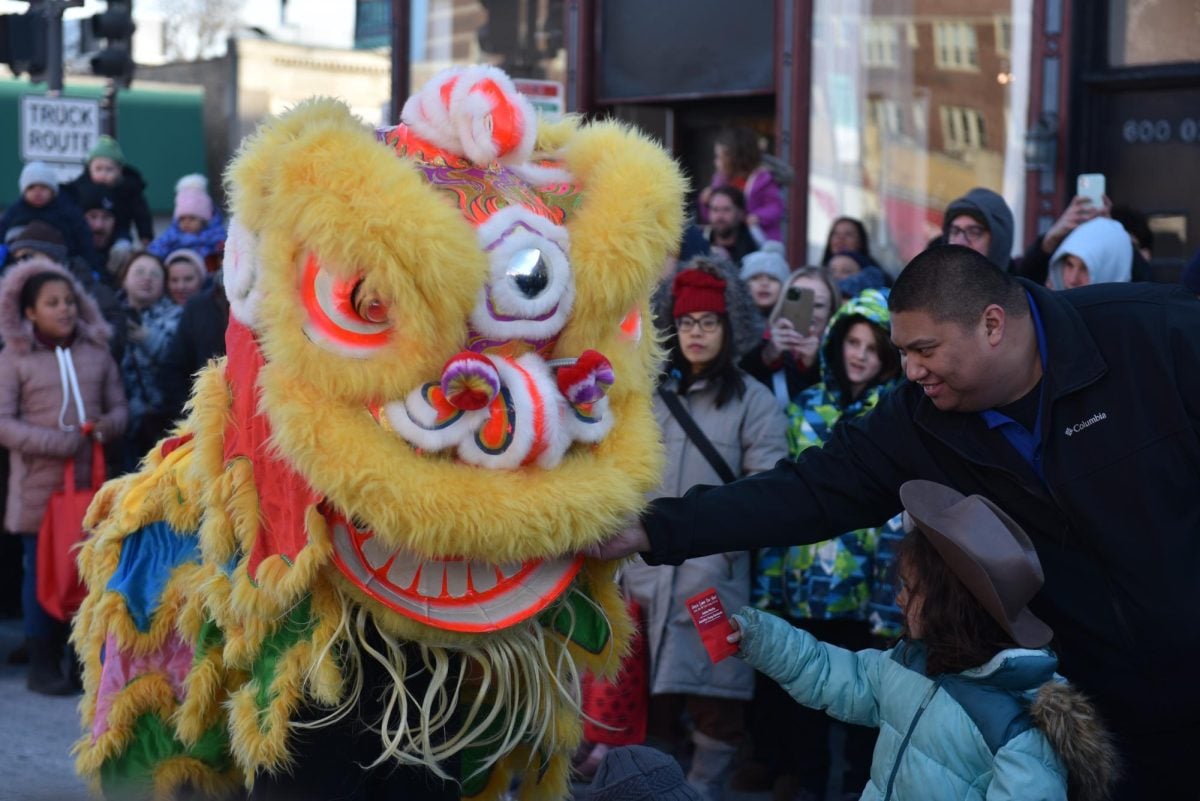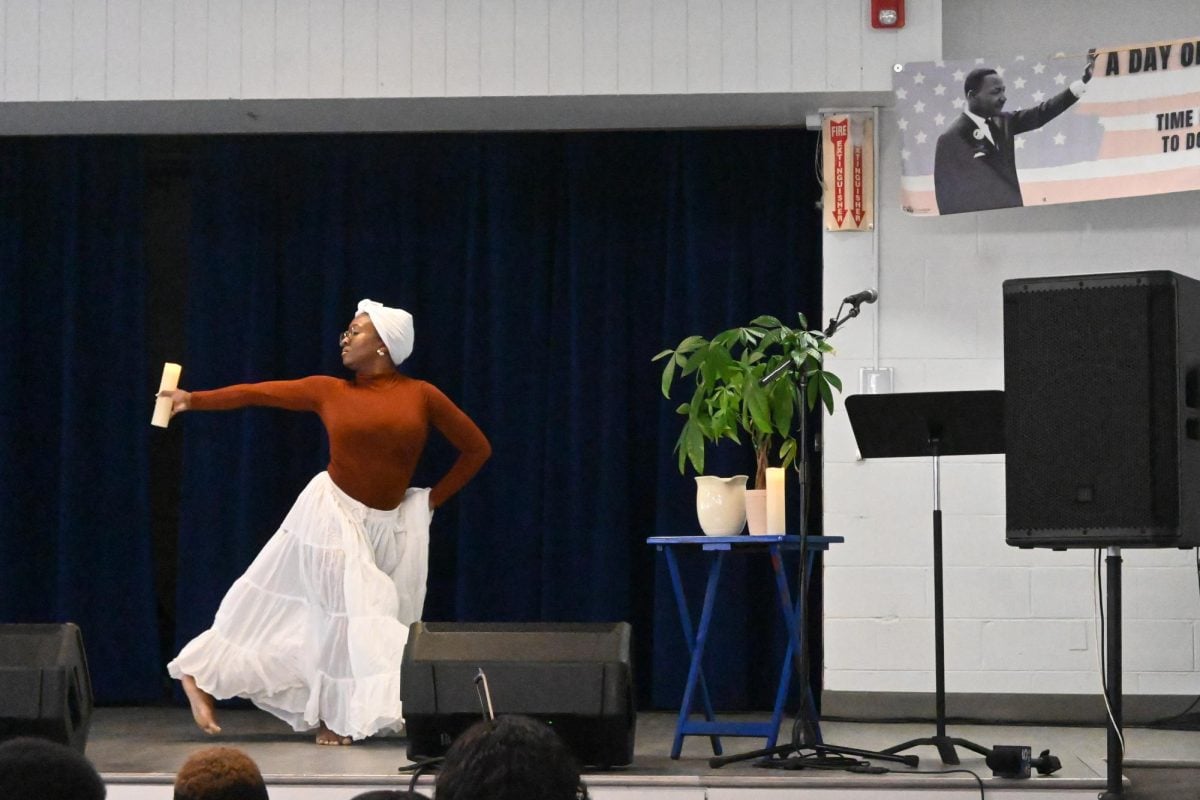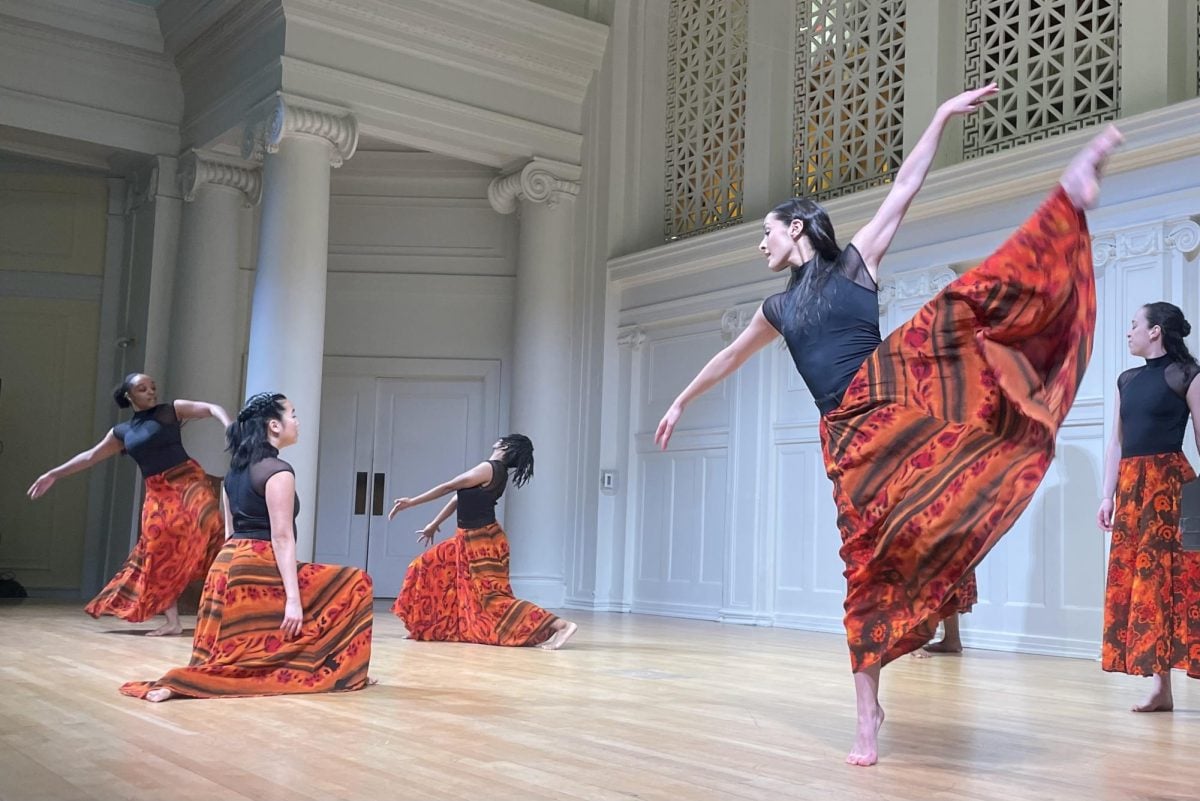Kathleen and Jason Hardy (Medill ‘95) stood beside a touch table at the Mitchell Museum of the American Indian, watching their 10-year-old daughter Aislyn play with replicas of artifacts from the Cherokee Nation.
The family makes a point to celebrate Indigenous Peoples’ Day every year, they said, to honor Kathleen’s Cherokee heritage. Kathleen Hardy said it hasn’t always been easy to find Indigenous representation and events for the community.
Amid the clamor of families exploring the Mitchell Museum on Monday, she said she saw a greater acknowledgement of Indigenous communities.
“Since the Standing Rock protest, protecting water rights, a lot of Indigenous people are, I think, experiencing a moment right now … (of) a lot of media exposure, and just elevating their voices and the lives of the people,” Kathleen Hardy said.
Kathleen, Jason and Aislyn Hardy were three of over 300 attendees at the Mitchell Museum’s Indigenous Peoples’ Day celebration. For the past several years, the museum has offered free admission and tours of its exhibits on the holiday, inviting Indigenous vendors to sell their goods at the museum.
First celebrated in the United States in 1992, Indigenous Peoples’ Day typically falls on the second Monday of October and celebrates the heritage of Indigenous American peoples and their cultures. The holiday falls on the same day as Columbus Day and aims to acknowledge the damage of Christopher Columbus’ colonial legacy to Indigenous communities in the Americas. In 2021, President Joe Biden issued the first-ever presidential proclamation of Indigenous Peoples’ Day.
Monday’s event at the Mitchell Museum showed record-breaking attendance, according to the museum’s Director of Development, Joseph Gackstetter.
“For us, it’s really important to share the awareness of the day, as it kind of stands to show a mirror to our previous celebration of Columbus Day,” Gackstetter said. “I think it encourages people to rethink Columbus’ role in the North and South Americas — the impact that he’s had, as well as the crimes that he’s committed.”
Currently, the Mitchell Museum houses two exhibits. The upper level is home to the “No Rest” exhibit, which pays artistic tribute to missing and murdered Indigenous women. The traveling exhibit was originally supposed to close in September, but has been extended through 2024.
In the downstairs area, visitors can take “A Regional Tour of American Indian Cultures”, encountering artifacts, displays and replicas of different Indigenous nations from across North America.
At Monday’s event, several new tables were set up in the downstairs area for Indigenous vendors. Racks of colorful skirts and displays of vibrant beads greeted visitors as they moved through the space.
Behind one of these tables, Maritza Garcia and Sergio Ceron advertised Garcia’s business, Chacha Beads. Garcia, a member of the Mississippi Band of Choctaw Indians, said she designed and made all of her beads by hand.
“These are caps made out of my designs, this is my traditional wear,” she said. “But I grew up here in Chicago, so I’m more influenced (by) the florals that the tribes up here, they use, all that stuff.”
Ceron, a member of the Otomi people of Mexico, said events like Monday’s are a great opportunity to “share a little bit of our culture” with the broader community.
As visitors from Evanston, Chicago and beyond cycled in and out of the museum throughout the day, attendees like Kathleen Hardy were left feeling hopeful of the way in which Indigenous culture is being shared.
“It’s been really important, and we talk about the people who live here first, and how they used the land and what they revered about the areas they lived in,” she said. “And we’re starting to hear that again.”
Email: lilycarey2025@u.northwestern.edu
Twitter: @lilylcarey
Related Stories:
—Chicago activists push to replace Columbus Day with Indigenous Peoples’ Day
—NAISA celebrates Indigenous Peoples Day with sunrise and sunset gatherings
—Mitchell Museum’s ‘No Rest’ calls attention to epidemic of missing and murdered Indigenous women

